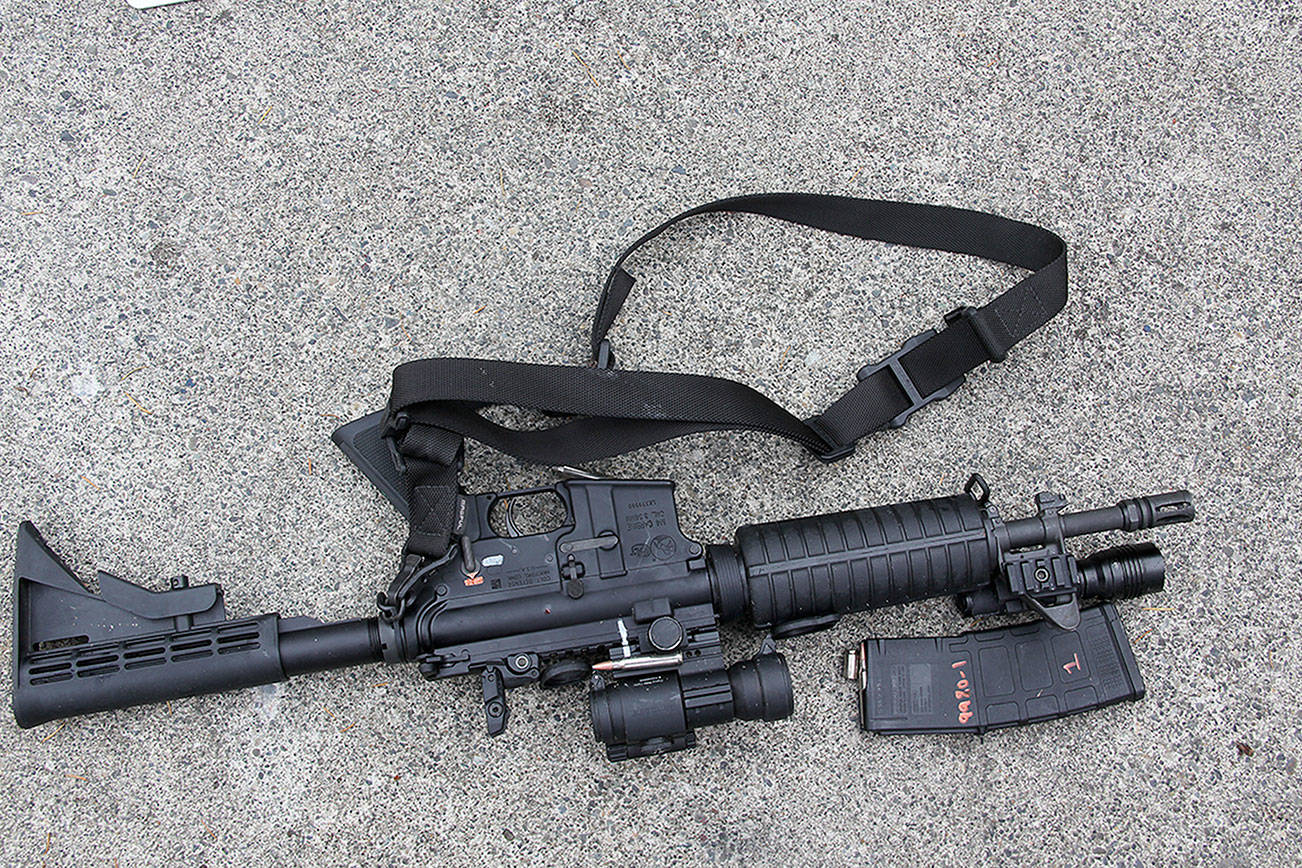A deputy was justified in fatally shooting Navy sailor Nicholas K. Perkins during a police standoff on North Whidbey Sept. 17, 2017, the Island County prosecutor concluded in a review of the incident.
The document outlines the unusual events that ended with a wrestling match between Perkins, his friend and a deputy.
Perkins fired the deputy’s rifle 10 times, shooting his friend in the leg once, the review indicates.
A second deputy, Trevor Wolff, entered the fray and shot Perkins three times.
“Once Mr. Perkins began firing the rifle, any person would have been justified under the law to use lethal force to stop him,” Island County Prosecutor Greg Banks wrote.
The review also states that Perkins was suffering from mental health problems, including post traumatic stress disorder, prior to the shooting.
The man who was shot in the leg, Navy Chief Heath Garcia, filed a tort with Island County asking for damages.
Chief Criminal Deputy Rick Felici with the Island County Sheriff’s Office said it didn’t appear from reading the prosecutor’s review that department policy was violated during the incident but that a “use of force review board” will conduct an administrative review.
Such a board hasn’t been convened in the sheriff’s office since the 1970s, he said.
The shooting was investigated by the Skagit County Multi-Agency Response Team.
Banks reviewed more than 2,000 pages of documents and other media, as well as interviews with 26 witnesses, for his analysis.
The review describes Banks’ assessment of what likely occurred that day. It begins at about 8:15 p.m. when a friend of Perkins reported to police that Perkins had texted “I’m done — Ready to die” and an image of a gun.
Deputies arrived at his North Whidbey home and saw through a window that Perkins was armed with an AR-15 rifle, which he aimed at one of the deputies.
The deputies took cover. Perkins’ roommate came out and told deputies that Perkins had the rifle, a shotgun and a semi-automatic pistol.
Deputies notified Perkins’ command at Naval Air Station Whidbey Island. Garcia, a friend of Perkins, was on duty but drove to the house where the standoff was occurring.
“Mr. Garcia’s superiors, his subordinates, and others in the Navy would later say they neither authorized nor directed him to leave his post to go to Mr. Perkins’ house,” Banks wrote, but noted that Garcia claimed his superior gave him permission to go.
At the scene, Garcia and the roommate entered the house without permission from law enforcement, Banks concluded; Garcia later said the police gave him permission to enter. They tried to convince Perkins to come out, but he refused and said he was afraid police would shoot him.
Deputies later allowed Garcia to go back in the house more than once, effectively acting as go-between for Perkins and the police.
The command master chief from Perkins’ squadron and a flight surgeon arrived at the scene and talked to Perkins. He eventually came out, armed with a shotgun. He yelled obscenities at the police and told them to leave.
Garcia was nearest to Perkins and suddenly put him in a “bear hug,” yelling for help from the deputies.
Deputy Robert Mirabal put the safety on his rifle and slung it over his shoulder. He tackled the two men to the ground.
During the struggle, Mirabal’s rifle moved to the front of his body. Perkins was able to switch off the safety and pulled the trigger on the rifle 10 times, Banks concluded.
One of the bullets struck Garcia in the lower leg. Other bullets went through a nearby car. Mirabal punched Perkins in the face several times to get him to stop firing.
Deputy Wolff arrived and “intentionally fell onto the men believing it was the safest place to be,” Banks wrote.
Concluding that Perkins was firing the shots, Wolff drew his pistol and shot Perkins three times in the torso.
Mirabal immediately started CPR on Perkins, but he died at the scene.
The reason for the prosecutor’s review of the incident, according to Banks, was to determine whether any law enforcement officers acted criminally. He found that both Wolff and Mirabal were justified in their use of force.
“A reasonable officer, in light of the facts known to Deputy Wolff, would have believed that deadly force was necessary to prevent death or serious physical harm to Deputy Wolff and others,” Banks wrote.
Banks also concluded that Garcia did not break the law.
“Although Garcia’s actions could be argued to have precipitated the shooting,” the prosecutor wrote, “there is no evidence to suggest he intended anything other than bringing about a peaceful resolution to an armed standoff.”
Officials at the base were waiting for the investigation to be complete to “evaluate the incident in accordance with the Uniformed Code of Military Justice,” according to base Public Affairs Officer Mike Welding.



